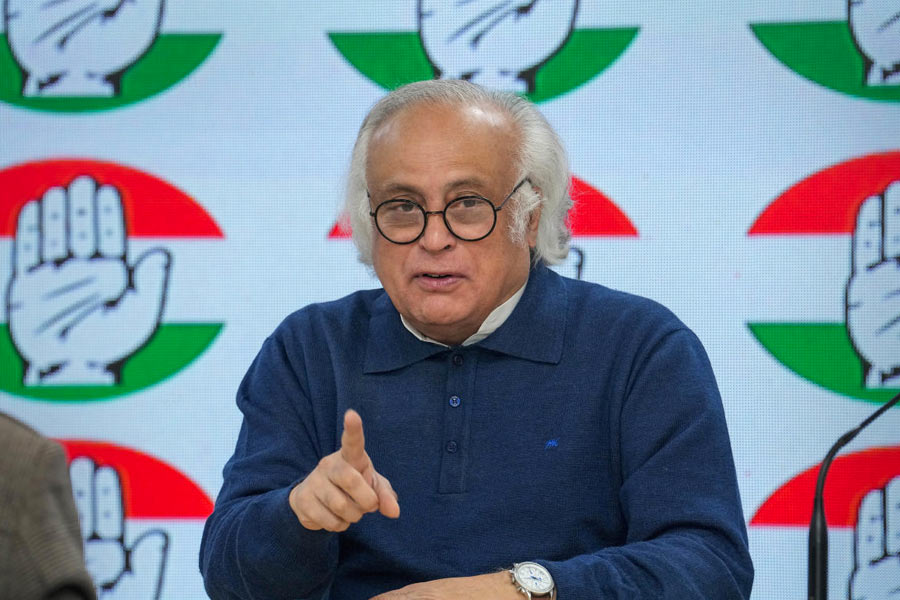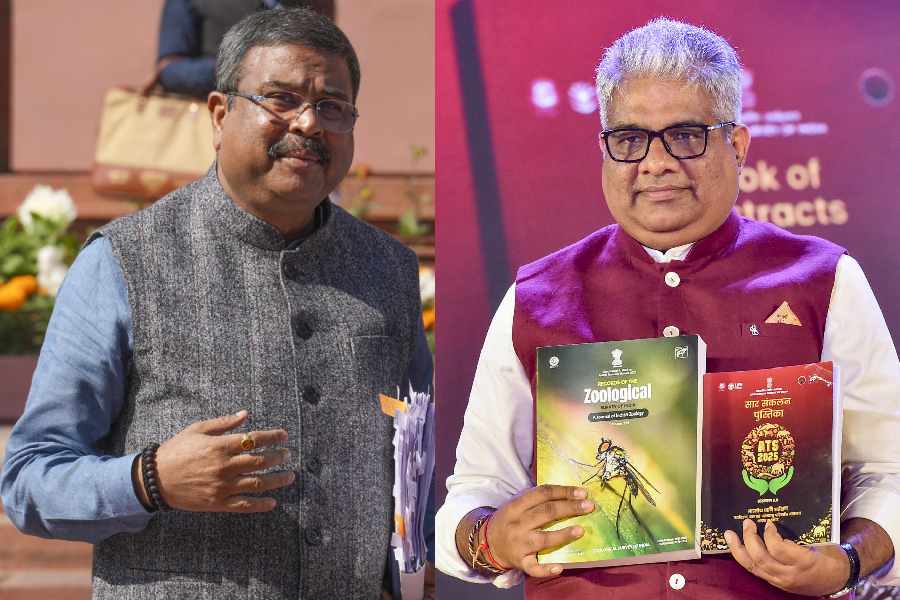

When seasons expire upon their fruit, what remains is a memory of their succulence; you are biting at lapsed time and all it ever gives is the clatter of vain teeth. Courtesans would have been a fine thing. But how are we to know who weren't to that manner born? They don't sing here anymore for no one comes to listen. But their song left an orphan echo, bounding about in search of willing ears. Remember the haunting wail of the steam engine tearing through a desolate night in Kamal Amrohi's enduring courtesan tale, Pakeezah?
There's more than a week to go before Begum Jaan hits the screens, but the temptations have begun to tempt. Set against the backdrop of Partition, the film is about a tawaif or courtesan who inhabits a patch of borderland. The title role is the sensuous Vidya Balan's and lending voice to the musical renditions is Asha Bhonsle. If trailer views are any indication, the legion of fans is impatient and curious. The music rushes, released last week, have logged up four million views to date.
" Prem mein tohrey...," riding raag Majh Khamaj, Asha's raspy voice treads confidentially at first, then digs its heels and becomes an insistent "...aisey padi main" and finally breaks out into a full-throated confession of love with " purana zamana naya ho gaya". It roughly translates thus: I have fallen in love with you so deeply that even these humdrum times have assumed a novel charm. "Aankhon se chhalke shaam Awadh ki/Subah hai honthon pe Benaras wali," the rhapsody continues to unravel. Meaning: My eyes well up with those evenings in Awadh/On my lips, the caress of the morning is Benaras.
Awadh, central Uttar Pradesh, in general and Benaras in particular, might today lie overrun by a conformist Hindutva rush, but there was a time this topography used to be known as home to a sonorous challenge to conformism - the courtesans. "Benaras had become the centre of an exclusive musical style of thumri and associated light classical forms - hori, chaiti, kajari and dadra - practiced and preserved almost exclusively by women from courtesan backgrounds," says documentary filmmaker Saba Dewan whose 2009 film, The Other Song, looks at the lost traditions and cultures of tawaifs across north India.
Dewan points out that the denouement of the tawaif began in the run-up to Independence. The British strategically harped on the Victorian notion of morality to represent the native royalty as profligate, steeped in decadent pleasures and, therefore, incapable of ruling the country. The newly emerging Hindu nationalists latched onto this and raised a cry to cleanse society of such degenerate practices in order to "regain its stamina and vitality". Perhaps the tawaif also became an easy target because of the perception that this was a Muslim import. Even Gandhian nationalists, influenced by the Mahatma's own notions of sexual morality, took up the chant in right earnest.
The colonialists and nationalists, both put down the tradition of the tawaif to further their respective ends. A way of life was pincered to death.
Srijit Mukherji, the writer-director of Begum Jaan, borrows heavily from Saadat Hasan Manto's Teetwal Ka Kutta, Shyam Benegal's Mandi and Ketan Mehta's Mirch Masala, to script his own potboiler, conveniently taking this from tawaifs and that from prostitutes to create his protagonist.
Classical singer and music critic Meena Banerjee puts her finger on the problem. " Baijis or courtesans should never be confused with beshyas or prostitutes. Courtesans were just carrying on the tradition of the mythical apsaras and kinnaris, who were known as devadasis in Hindu culture. They find mention even in Bharat Muni's Natyashastra as the custodians of music and dance."
The drawing of distinctions between prostitute and courtesan is not to play down either group, for both are professions born of a market demand. The differences lay defined by moral injunction, but really they are only about art and economics.
Tawaifs were not only trained in music and dance, but were also required to know literature, politics and the arts. They were well versed in ilm-e-majlis, or social etiquette, and had a certain degree of refinement. But the centrepiece of what they embodied was music. A courtesan who sang was called bai, and one who could dance and sing was referred to as jaan.
The nature of patronage - from both Hindu and Muslim gentry - influenced the taalim (training) of the performers; it also determined the syncretic character of the music they practiced. Tawaifs dabbled in dhrupad and khayal, the pure classical forms of ancient India that came to flourish in the Mughal court, the semi-classical thumri with its Krishnaite Braj Bhasha, and the Urdu ghazal.
Of these, thumri reached its pinnacle in Lucknow during the reign of Wajid Ali Shah, Nawab of Oudh, who was later exiled to Calcutta by the British. "The Nawab fused thumri with the dance form of Kathak, inventing a bol banao form that helped performers express their bhav (emotion)," says Banerjee. This form was embellished by tawaifs.
Now, tawaifs lived in semi communes with other tawaifs, and their establishment, or kotha, was maintained by a patron. The rich patrons - maharajas, nawabs, zamindars, merchants - appreciated these women for who they were, but marriage was never an option. The kotha and the home were mutually exclusive worlds. And this "othering", like a thorn on the side, continued to torment generation after generation of these otherwise independent-minded women artistes. And the yearning to belong to the patron, and belong respectably, lit up their music. Art and heart coalesced and fed each other.
Nirmal Chander Dandriyal, who has made a documentary film on Begum Akhtar, talks about a music teacher from Lucknow whom he once interviewed. "He told me how a tawaif's enunciation of the word 'saiyyan', meaning companion, was unparalleled. That single word was imbued with an expression of longing and unfulfilled desire that cannot be approximated by just anyone."
But then, with the abolition of the princely states and the rise of purported socialism, traditional avenues of patronage started to disappear. Feeling the pinch, courtesans began exploring other professional avenues. Some joined the proscenium theatre, some took to acting in films and some others cut music records.
"One of the first recorded songs was of Gauhar Jaan, a famous courtesan of Calcutta's Chitpore area," says classical music singer and scholar of Bengali music Devajit Bandyopadhyay.

Gauhar was the daughter of Benaras's Malka Jaan, a courtesan of Jewish-Armenian descent. When Malka came to Calcutta to earn a living, she was invited to perform before Wajid Ali Shah. After the performance, she was appointed court singer. "Apart from her, Calcutta had Bengali courtesans such as Krishnabhamini, Indubala and Angurbala living in the Bowbazar and Chitpore area. They had fans in the Tagore family and many other aristocrats of Bengal," says Bandyopadhyay.
But as the power quotient of old patrons diminished in the new Indian republic, the stigma attached to tawaifs increased. There was still a demand for their expertise but, in post-independent India most courtesans either had to go into hiding or sever ties with their past. A ban on kothas was followed up by frequent police raids after the implementation of the Suppression of Immoral Traffic in Women and Girls Act in 1956. And then, All India Radio (AIR), which had consciously taken over patronage of music from the princes, set down a rule that lasted quite a while - only legally married women could sing on AIR airwaves.
"A lot of courtesans were either forced to marry or change their surnames. Others went into hiding to earn the grade of special artiste in AIR," says sociologist and Benaras expert Amitabha Bhattacharya. But even there they were treated like outcastes. At the radio station they were not allowed to share waiting rooms with women artistes from so-called respectable families. Mujras and mehfils dwindled. Those who were lucky found a home, others went from riches to rags.
Banerjee mentions Siddheswari Devi, a thumri exponent from Benaras, who was also her teacher for a brief while. Siddheswari Devi apparently had no qualms in admitting that she had been a courtesan in her early life. But that was not the case with Begum Akhtar. The latter's disciples insist she was never a tawaif. "This is a distortion of history and they do so because tawaifs were turned into outcastes," says Dandriyal.
Dewan recalls how, in the course of filming her documentary in Benaras, she met musicians who not only would not admit to any past link with courtesans but also denied knowledge about the whereabouts of those who were still around. Nevertheless, she managed to contact some women from tawaif families. Saira Begum was one such. Says Dewan, "She was already in her fifties. Though based in Benaras, she belonged to a well-known family of tawaif singers from Bihar."
Through Saira, Dewan got an insight into a tawaif's family life - how daughters in these households were pampered in much the same way as boys in patriarchal families, because they were regarded as future breadwinners, how the head of the household was always the senior-most tawaif, the nayika, who functioned as the matriarch.
Born at a time when the tradition was in decline, Saira lived with the disappointment of not having had the opportunity to "learn and live music" as had the older women in her family. In her own times, she was no less successful but she stopped performing once her children were born. Instead, she would occasionally perform outside the city where few people knew her personally. She, however, did not teach music to any of her three daughters.
Bandyopadhyay, who has collected " baiji sangeet", or songs of courtesans, for years, tells a similar tale about Madhuri Devi Singh, perhaps the last living baiji or tawaif of Calcutta. Madhuri, apparently, last performed in a Kathak festival in San Francisco in 2006, where she was introduced as the real Umrao Jaan - the eponymous courtesan of Mirza Hadi Ruswa's novel. "Now Madhuri has disappeared in the crowd of new Calcutta. She's raised her granddaughter to be a doctor."
Saira and Madhuri are examples of how tawaif performers reinvented themselves, through cosmetic euphemism and lifestyle changes, in order to negotiate the altered times. Those who couldn't do as much died unattended in desolate corners, hugging penury. The story goes that during her last days, the famous Rasoolan Bai had to run a tea shop next to the radio station in Allahabad, where she once sang.
Srijit Mukherji's Begum Jaan says with a sneer, " Bhikhmangon ki tarah nahin, raani ki tarah marungi (I shall die like a queen, not like a beggar)."
Truth is, India's courtesans are long gone, dead fruit only memory may be foolhardy enough to bite.










